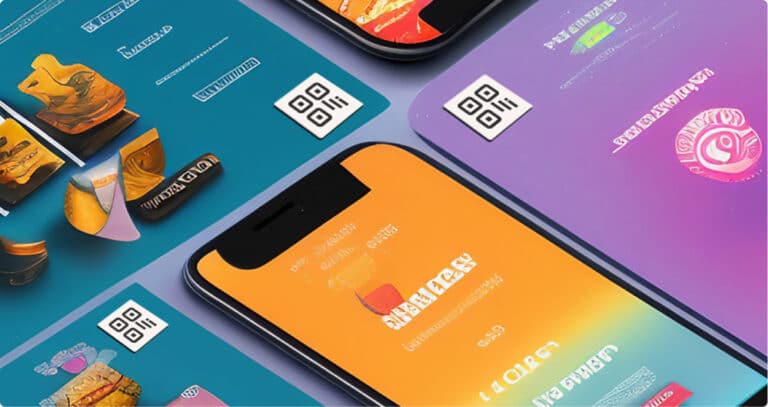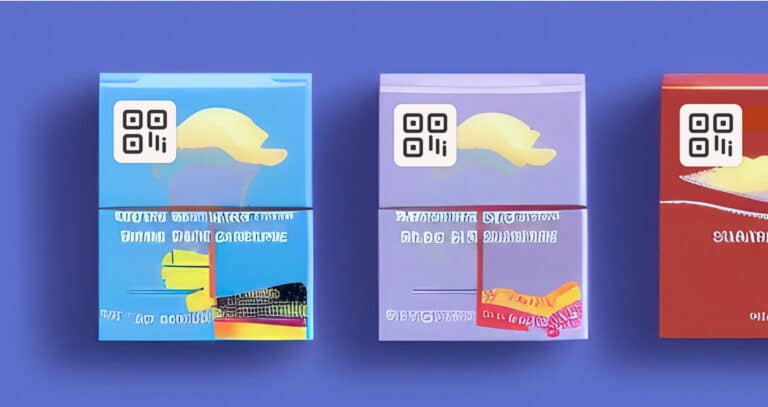What is GS1 digital link technology implementation?
GS1 digital link technology implementation is the process of deploying digital link technology as the new standard for product identification, linking every single physical product to accurate product data and content online.
The opportunities are mind-blowing: from hugely improved supply chain visibility and inventory tracking to radically transformed brand-consumer (and doctor-patient) relations, next-level business intelligence, and beyond.
This innovation potential is enabled by an ingeniously designed infrastructure; a technology stack that can be helpfully described as a layer cake, where every additional layer adds to the previous ones to get the final result. Let’s see what ingredients you need.
GS1 digital link implementation overview
Even if the basic idea behind GS1 digital link is quite easy to grasp (and it’s genius exactly because it’s easy), the amount of technical jargon involved in any explanation of how digital link works might be overwhelming for the majority of us.
Enter the GS1 digital link layer cake model. This framework, first introduced by the GS1 authority to explain the digital link standard architecture in a simple way, also works as a digital link implementation blueprint. Everything you need to make a digital link infrastructure work for your company or organization is defined here. Or almost everything: we will cover a few more key elements at the end of this guide.
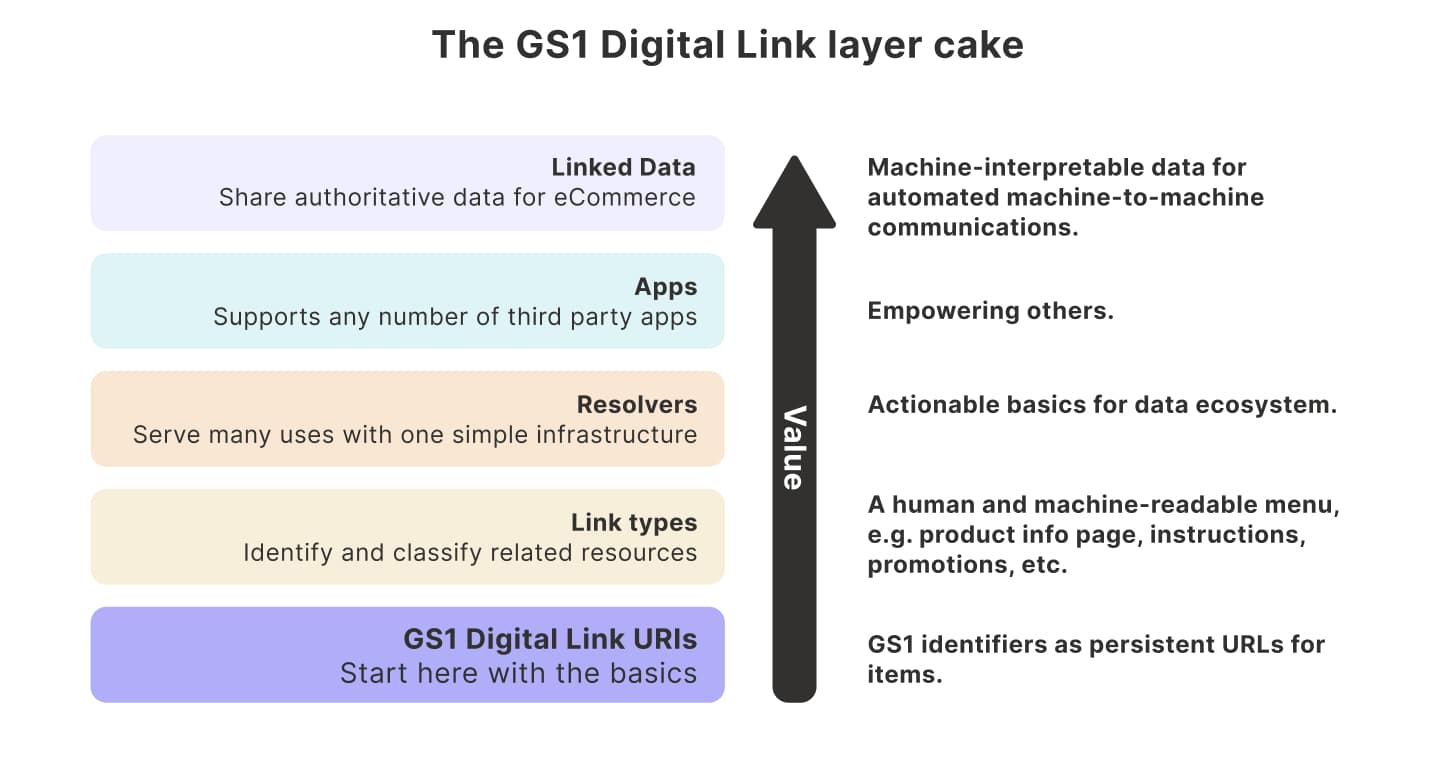
From bottom to top, the layers are:
- GS1 digital link URI
- GS1 digital link types
- GS1 digital link resolver
- GS1 digital link apps
- GS1 digital link linked data
Let’s take a closer look at them, one layer at a time.
GS1 digital link URI syntax
What is a URI?
A URI is a Uniform Resource Identifier: a sequence of characters that uniquely identifies and/or locates a logical or physical entity. Everything can be identified by a URI: web resources of course, but also products, objects, places, or people. Think of the URI as the parent protocol of the much more widely known URL. Actually, URL (Uniform Resource Locator) is a subtype of the URI, providing the directions to reach the identified entity.
The URI syntax for digital links as defined by the GS1 digital link standard is the foundation of the whole technology.
Without a properly formatted digital link URI there’s no connection between a physical product and its digital version, including all the additional information and related content accessible through the web. In other words, without a valid digital link URI, there’s no cake at all.
GS1 digital link URI structure

Here’s an example of a link constructed according to the rules of digital link URI syntax:
Apart from the initial scheme defining the protocol, with HTTPS being the most recommended, the main elements of a valid digital link URI are:
- the domain*
- the primary identification key*
- the identifier*
- the key qualifiers
- the qualifiers
- the data attributes
- the attributes
* These elements are mandatory to create a functioning digital link
Let’s see them one by one.
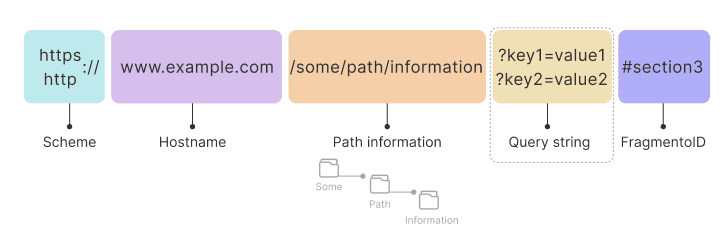
GS1 digital link domain
The digital link domain defines the place on the Internet where you are looking things up. It’s the website address where the digital information connected to the identified product is organized and stored.
This is the core part of any digital link, together with the product identifier, since the very nature of the digital link is the combination of a web address and a barcode, that brings products online.
Businesses will make sure to use their own registered domains or subdomains to highlight their brand and provide the most reliable source of information about their items.
In addition, the domain is also a crucial part of the digital link URI because it determines which resolver will be contacted in order to retrieve the desired information or piece of content, depending on who is visiting the digital link and from where. More on the resolver in a short while.
GS1 digital link primary identification key
The digital link primary identification key is a code (either a numeric value or a lower-case short name, both indicated by the GS1 digital link standard) that defines the type of identifier attached to the product that the system should expect to receive through the digital link.
The GS1 digital link standard specifications include a long list of admitted GS1 application identifiers (AI) that can be used in constructing a digital link:
- GTIN
- ITIP
- Global Model Number
- CPID
- ship-to
- bill-to
- purchased from GLN
- ship-for
- Physical Location GLN
- GLN of invoicing party
- GLN of production/service loc.
- Party GLN
- GSRN of the Provider
- GSRN of the Recipient
- GCN
- SSCC
- GDTI
- GINC
- GSIN
- GRAI
- GIAI
In the example URI above, the primary identification key “01” stands for GTIN. Accordingly, a proper GTIN number must be provided as a product identifier after “/01/”.
GS1 digital link identifier
The identifier is the string that provides the actual value of the product ID within the digital link, whose type is indicated by the primary identification key.
The identifier is the part of the digital link that will be read by scanners at points of sale, pulling the relevant information needed at the checkout.
The most common and widely adopted type of identifier is the GTIN (Global Trade Item Number), used in both physical retail and e-commerce worldwide.
The GTIN itself is actually a family of identifiers, including GTIN-12 (UPC-A), a 12-digit identification number mainly adopted in North America, GTIN-8 (EAN/UCC-8), and GTIN-13 (EAN/UCC-13), respectively an 8-digit and a 13-digit numbers adopted outside of the US – only to name the ones that are currently used at POS.
GS1 digital link key qualifiers
A key qualifier is a code that defines the type of product qualifier (like a batch reference or a serial number) added to the digital link. The qualifier is an optional part of the digital link, and multiple qualifiers can be included within the same URI if needed.
These are the key qualifiers allowed by the standard:
- Consumer Product Variant
- Batch/Lot identifier
- GTIN Serial Number
- CPID Serial Number
- GLN extension
- Payment Reference Number
- Service Relation Instance Number
- Third-party controlled serialized extension to GTIN
- GS1 UIC with Extension 1 and Importer Index
The key qualifier “22” in the digital link URI syntax example above, for instance, tells the system that a value for a CPV (Customer Product Variant) should be expected after “/22/”.
GS1 digital link qualifiers
The qualifier is the string that provides the actual value of the product qualifier within the digital link, whose type is indicated by the key qualifier.
As mentioned above, one or more qualifiers can be included in a digital link. For example, the variant of a product, its serial number, and information about the production batch/lot.
GS1 digital link data attributes
A data attribute defines the type of value to be expected for secondary-level product information within a digital link, as opposed to identifiers and qualifiers.
Like qualifiers, attributes are not mandatory in the digital link URI syntax, and there might be one or more, all of them expressed by key=value pairs.
Data attributes suitable for use in a digital link include:
- Net weight
- Gross weight
- Length
- Width
- Depth
- Best before date
- Expiry date
- First freeze date
- Harvest date
and many, many more.
Even from this very short list, it’s easy to see how crucial digital link attributes can be for logistics management, inventory tracking, and granular supply chain visibility.
GS1 digital link attributes
The attribute is the actual value of the product attribute assigned via the data attribute key=value pairing. In other words, the attribute is the net or gross weight of the item, its measurements, or its expiration date, just to make a few examples.
In our model URI, the data attribute “17” signals an expiry date to follow after “17=”.
The formatting rules for the attributes are defined in the GS1 digital link standard specifications.
GS1 digital link types
What are GS1 digital link types?
Link types are to digital links as menu items are to websites: a series of available options for finding information and content related to a specific theme, topic, or category.
On a more practical level, you might need to make available through a digital link a plethora of additional resources, such as a page with more product information, the nutritional facts label for food items, the EU Digital Product Passport, the product recall status API, the hazardous material info, the inventory status, the user instructions, the clinical information for healthcare products, an e-commerce platform, or a loyalty program for customers. These – and many more – are link types in the digital link environment. The list of opportunities is actually endless.
The link types layer is where you start perceiving the actual order of magnitude of the digital link innovation. With a barcode, you can store and transmit only so many characters carrying simple information. With a digital link, you can provide business partners and consumers with a whole menu of options all at once.
But how do you put the right information in the right hands? The answer is at the next level up the stack: the resolver layer.
GS1 digital link resolver
What is GS1 digital link resolver?
A GS1 digital link resolver is a web-based system that works as an interpreter and a traffic controller. It decompresses, validates, and translates the information stored in a digital link URI, smart redirecting to the appropriate links or pieces of content.
The whole idea of “a single link for many different purposes“, which is essential to the digital link concept, would be a mere fantasy without the services provided by the resolver.
The resolver technology makes it possible that the same code works the same as a traditional linear barcode when scanned at POS, while if consumers read it with their smartphones, something entirely different can be shown, like a special offer or a video tutorial. The digital link behavior can be determined by the device used to read it, the software, or the location where it’s read.
Essentially, the resolver is what turns a digital link into a hub providing access to multiple, contextually relevant information sources – defined by the link types. Without a resolver, a digital link can only connect a product to one single resource at a time.
How to implement a GS1 digital link resolver
Technically, when a resolver receives a valid URI, a few things can happen:
- The resolver redirects to online resources (such as a product information page) or also to an API.
- The resolver directly delivers a piece of content.
- The resolver redirects to another resolver if it doesn’t have the necessary info about the identified item.
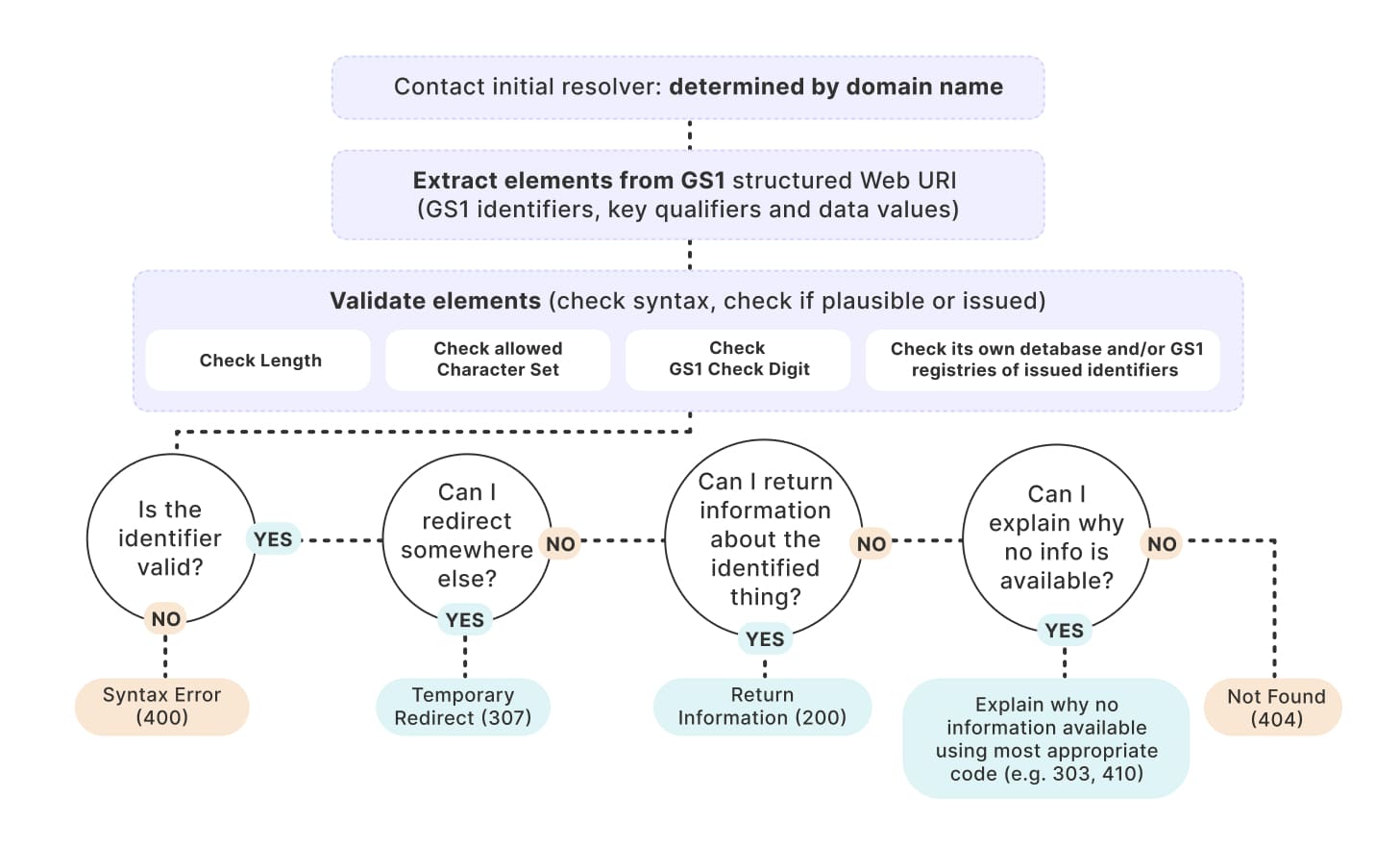
While virtually anybody with enough human resources, time, and money to invest can build a resolver, in reality, solid and reliable resolving services can be supplied by third-party providers like Digital Link (it’s us!), with a flexible Software-as-a-Service (SaaS) model.
In our case, the digital link resolver comes bundled with a state-of-the-art, end-to-end solution that includes a dynamic QR code generator, a QR visual editor, an intuitive product page builder, advanced statistics, and much more.
GS1 digital link apps
What are GS1 digital link apps?
GS1 digital link apps are third-party software built on top of the GS1 digital link standard providing specific services to specific audiences.
Businesses, organizations, and solution providers are free to develop digital link-based applications that serve their individual purposes and put the standard’s capabilities to good use, from track & trace mobile applications for retailers to augmented reality experiences for end-users.
Tool kits and source code have been made available by the GS1 authority on an open license for developers to create digital link applications.
GS1 digital link linked data
What are linked data?
Linked data are structured data about the product provided by an authoritative, reliable source through a digital link and formatted in a way that makes them interpretable by machines.
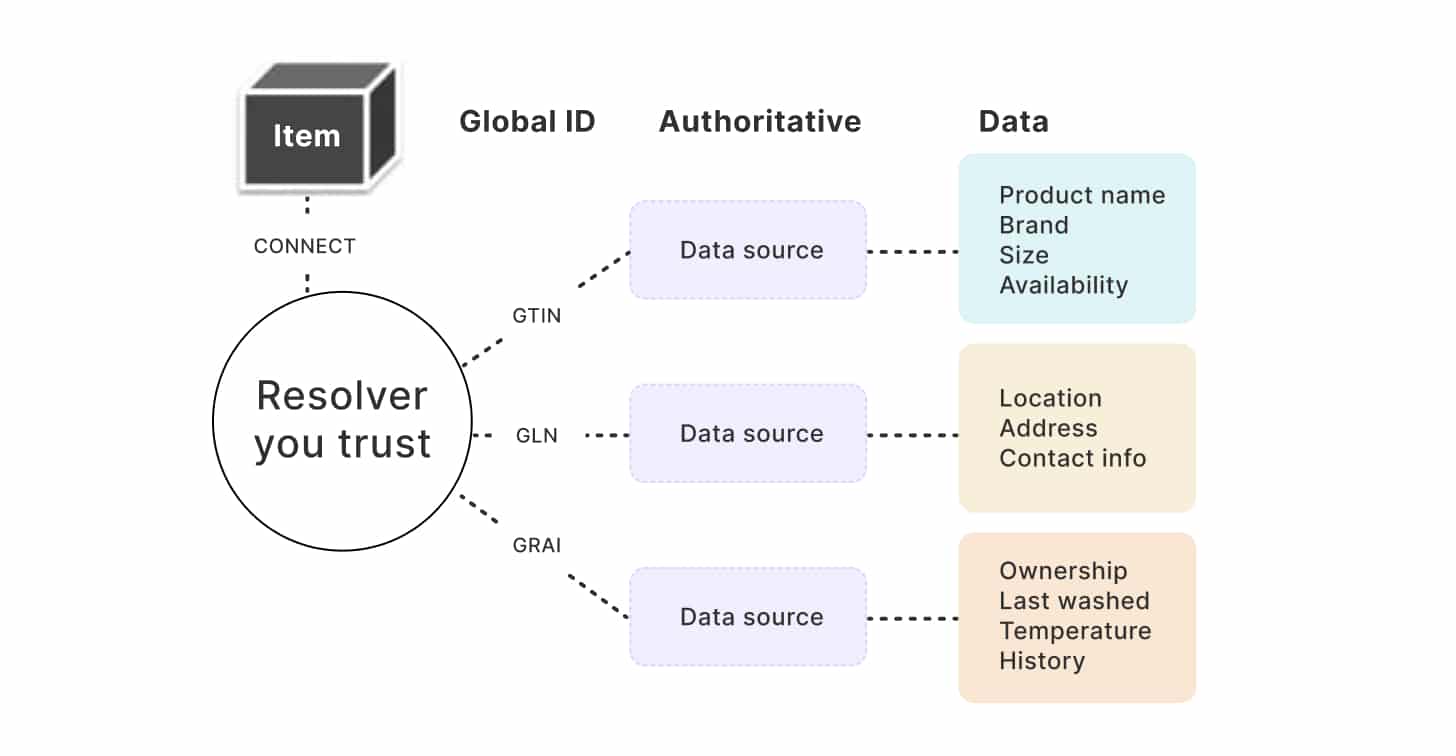
This is essential in every situation in which an automated process needs to translate trusted data into human-readable meaningful information. For instance, when it comes to product traceability.
At the same time, linked data are structured data, and structured data are key to improving the findability of a product on the web. Yes, we’re talking SEO.
Through linked data, digital links feed an unprecedented amount of authentic, easily digestible, and extremely accurate product data to search engines’ algorithms, incredibly enriching a product’s knowledge graph – the ever-expanding network of entities and properties related to that product and interlinked with each other.
GS1 digital link implementation additional elements
URI, link types, resolver, apps, and linked data are the five layers of the digital link cake. But what about the topping?
Baking apart, we have mentioned at the beginning of this guide that maybe there’s something more to digital link implementation than the elements in the layer cake model.
First, to make the magic happen you need a solution to effectively attach a digital link to a product and redirect visitors. That solution is a data carrier: a QR code, for example, or a Data Matrix.
Second, manually constructing digital link URIs one by one is obviously not sustainable. Also because you want to make sure that there are neither syntax errors nor typos or wrong information in your digital link before proceeding to print a flawed digital link QR on hundreds of thousands of, say, soda cans. You need a reliable tool to generate and validate your digital links.
Let’s get into details about these two important aspects of GS1 digital link implementation.
GS1 digital link data carriers
What is a data carrier?
Generally speaking, any medium that is capable of holding and conveying data – and especially machine-readable data – can be considered a data carrier. While this definition also applies to vinyl records, hard drives, and human DNA, we’re mostly interested in data carriers in which a digital link can be encoded, and that can be somehow added to the product itself, to its label or packaging.
There are currently two types of data carriers available for digital links, and both of them are 2D barcodes: QR codes and Data Matrix. Digital link QRs, in particular, are expected to replace in a few years the multiple barcodes (both 1D and 2D) and RFID or NFC tags often used on product packaging to connect consumers to relevant information and additional content. A single code will do all the heavy lifting.
But which type of data carrier should you choose? Here are some pros and cons.
Digital link QR code
Do we really need to explain what a QR is? They’re ubiquitous, with 75% of respondents to a survey in the US saying they are “eager to use more QRs” (Insider Intelligence, 2022). Basically, everything has a QR now, from commodities to restaurant menus, from business cards to car parts.
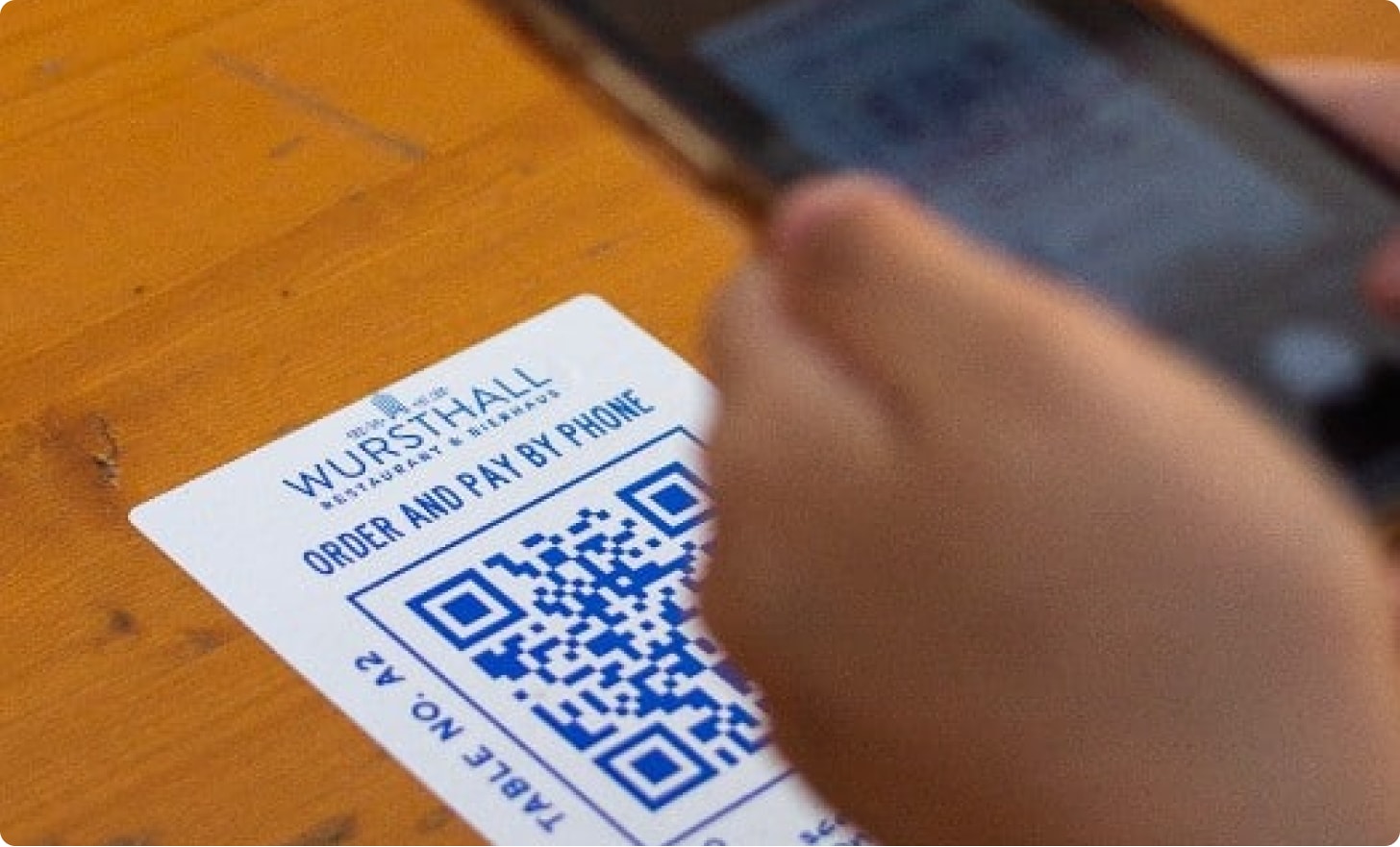
QR codes can be read by smartphone cameras, without any additional app, and they can store up to 4,296 alphanumeric characters.
Static QR codes contain information directly encoded in their pattern, while dynamic QR codes contain a short link redirecting to online resources, making it possible to change and update their linked content over time.
Digital link Data Matrix
Data Matrix is a type of 2D barcode that holds less data than a QR (max 2,335 alphanumeric characters) but is more easily readable by scanning devices even at a very small size (2-3 square mm) and with a low contrast ratio.
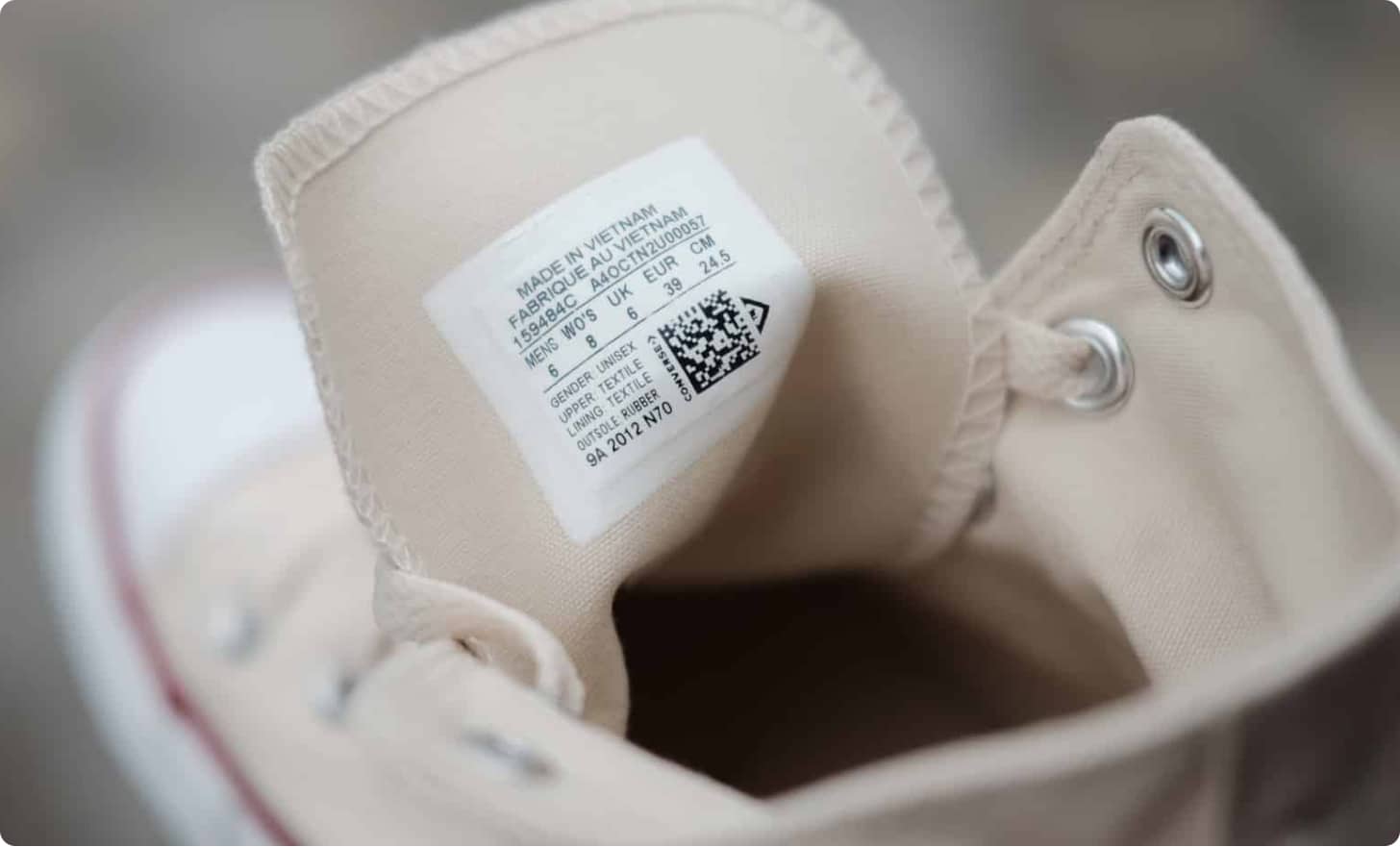
Data Matrix codes are mainly used in healthcare and electronic components.
All things considered, we strongly suggest you use QRs as data carriers for your digital links, especially if you want consumers to interact with them.
GS1 digital link generation and validation
GS1 digital link generation and validation is the machine-operated process of assembling correct and functioning digital link URIs, creating shortened links for them, encoding them in data carriers, and testing and validating both the URIs themselves and the 2D codes carrying the digital link to make sure they work properly.
Let’s say you did your homework and got all your domains, identifiers, qualifiers, and attributes ready to construct the digital link URIs for your products, and maybe you also decided you need QR codes as data carriers for your digital links.
What would you do next? Build the URIs yourself in a spreadsheet, one by one? And then? Maybe go to a QR code generator online and make a QR for each one of your links? That would be a nightmare and the furthest thing from a mistake-proof process. Definitely not a suitable solution for any company or organization.
Digital link generator
What you need is a tool that automates these tasks, and maybe also capable of pulling the necessary values to populate the URI from a database of product information, to bulk-create digital link QR codes for all the items in your catalog.
What you need is a digital link generator like Digital Link. With just a basic identifier such as a GTIN number as input, we create for you in real-time a digital link QR, the corresponding short URL, and a mobile-optimized product landing page showcasing your product information. Our system also checks for syntax errors and invalid data as it processes your input, ensuring that everything’s OK at this stage.
You can then conveniently customize both the product page (tweaking the design, adding more elements or links, updating the content, or enabling new behaviors) and the digital link QR itself (inserting your logo, changing its colors, or adjusting its shape). As you edit the QR appearance, the system will tell you if it’s still readable or if you need to, for example, resize an image that you have added that is blocking the data pattern, or improve the contrast between the foreground and the background.
Our digital link generator has detailed statistics about visits to your digital links, that will add a new dimension to your business intelligence.
We’ve got your digital link implementation and day-to-day operations covered!

